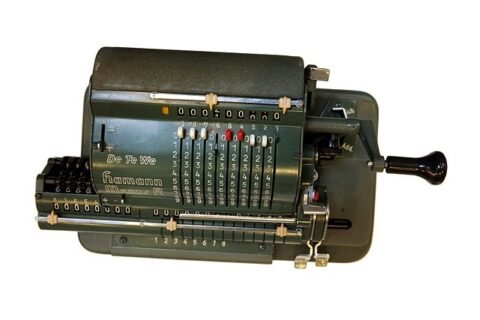Length Unit Converter
📏 Length Converter – Ultimate Guide to Convert Between All Length Units
From science and engineering to international trade and everyday measurement, the ability to convert length units quickly and accurately is essential. This guide explores every major and minor conversion—from centimeters to light years, inches to meters, microns to miles, and everything in between.
Whether you’re building a calculator, referencing conversion charts, or optimizing for SEO, this is your go-to reference for all length unit conversions.
🔄 Popular Length Unit Conversions
Here are the most searched, everyday conversions across metric and imperial systems:
| Conversion | Formula | Example |
|---|---|---|
| cm to inches | cm ÷ 2.54 | 10 cm = 3.937 in |
| inches to cm | in × 2.54 | 5 in = 12.7 cm |
| mm to inches | mm ÷ 25.4 | 100 mm = 3.94 in |
| inches to mm | in × 25.4 | 1 in = 25.4 mm |
| meters to feet | m × 3.28084 | 2 m = 6.56 ft |
| feet to meters | ft ÷ 3.28084 | 10 ft = 3.048 m |
| km to miles | km × 0.621371 | 5 km = 3.11 mi |
| miles to km | mi × 1.60934 | 1 mi = 1.61 km |
| cm to feet | cm × 0.0328084 | 100 cm = 3.28 ft |
| feet to cm | ft × 30.48 | 5 ft = 152.4 cm |
| inches to feet | in ÷ 12 | 24 in = 2 ft |
| feet to inches | ft × 12 | 5 ft = 60 in |
| meters to yards | m × 1.09361 | 10 m = 10.94 yd |
| yards to meters | yd × 0.9144 | 20 yd = 18.29 m |
These conversions are foundational in construction, fashion, design, and travel.
📊 Complete List of Length Units & Definitions
Below is a breakdown of 100+ length units, conversion relationships, and use cases, organized by category.
🌍 Metric System
| Unit | Conversion |
|---|---|
| Kilometer (km) | 1 km = 1,000 m |
| Hectometer (hm) | 1 hm = 100 m |
| Dekameter (dam) | 1 dam = 10 m |
| Meter (m) | Base unit |
| Decimeter (dm) | 1 dm = 0.1 m |
| Centimeter (cm) | 1 cm = 0.01 m |
| Millimeter (mm) | 1 mm = 0.001 m |
| Micrometer (μm) | 1 μm = 1×10⁻⁶ m |
| Nanometer (nm) | 1 nm = 1×10⁻⁹ m |
| Picometer (pm) | 1 pm = 1×10⁻¹² m |
| Femtometer (fm) | 1 fm = 1×10⁻¹⁵ m |
| Attometer (am) | 1 am = 1×10⁻¹⁸ m |
Metric units are universally accepted and used in science, medicine, and engineering.
🇺🇸 Imperial / US Customary Units
| Unit | Conversion |
|---|---|
| Mile (mi) | 1 mi = 1,609.344 m |
| Yard (yd) | 1 yd = 0.9144 m |
| Foot (ft) | 1 ft = 0.3048 m |
| Inch (in) | 1 in = 0.0254 m |
| Furlong | 1 furlong = 201.168 m |
| Chain | 1 chain = 20.1168 m |
| Rod/Perch/Pole | 1 rod = 5.0292 m |
| Link | 1 link = 0.201168 m |
| Hand | 1 hand = 0.1016 m |
| Span | 1 span = 0.2286 m |
| Nail | 1 nail = 0.05715 m |
| Barleycorn | 1 barleycorn = 0.00847 m |
| Mil | 1 mil = 0.0000254 m |
These units are still used in the U.S., U.K., and older documentation systems.
⚓ Nautical & Survey Units
| Unit | Conversion |
|---|---|
| Nautical Mile (International) | 1 NM = 1,852 m |
| Nautical League (UK) | 1 league = 5,559.552 m |
| Nautical League (Int.) | 1 league = 5,556 m |
| Cable Length | ~185.2 m |
| US Survey Foot | 1 ft = 0.3048006096 m |
| Chain (Survey) | 1 ch = 20.1168402337 m |
| Rod (Survey) | 1 rd = 5.0292100584 m |
Nautical units are crucial in marine navigation and international shipping.
🌌 Astronomical Units
| Unit | Conversion |
|---|---|
| Light Year | 1 ly = 9.46073×10¹⁵ m |
| Astronomical Unit (AU) | 1 AU = 149,597,870,691 m |
| Parsec (pc) | 1 pc = 3.08568×10¹⁶ m |
| Kiloparsec (kpc) | 1 kpc = 3.08568×10¹⁹ m |
| Megaparsec (Mpc) | 1 Mpc = 3.08568×10²² m |
Used in space science, cosmology, and deep space measurements.
🧬 Atomic / Quantum Units
| Unit | Conversion |
|---|---|
| Micron | 1 micron = 1×10⁻⁶ m |
| Angstrom (Å) | 1 Å = 1×10⁻¹⁰ m |
| Bohr Radius | ≈ 5.29×10⁻¹¹ m |
| Classical Electron Radius | ≈ 2.82×10⁻¹⁵ m |
| Planck Length | ≈ 1.616×10⁻³⁵ m |
| X-unit | ≈ 1.00208×10⁻¹³ m |
| Atomic Unit of Length | ≈ 5.29×10⁻¹¹ m |
| Fermi | 1 fermi = 1×10⁻¹⁵ m |
These are standard in particle physics, quantum mechanics, and theoretical science.
📜 Obscure / Historical Units
| Unit | Conversion |
|---|---|
| Arpent | 1 arpent = 58.5216 m |
| Vara (Castellana) | ≈ 0.8351 m |
| Cubit (UK) | ≈ 0.4572 m |
| Cubit (Greek) | ≈ 0.4628 m |
| Long Cubit | ≈ 0.5334 m |
| Ell | 1 ell = 1.143 m |
| Reed | 1 reed = 2.7432 m |
| Long Reed | 1 long reed = 3.2004 m |
| Roman Actus | ≈ 35.48 m |
| Ken (Japanese) | ≈ 2.118 m |
| Aln (Swedish) | ≈ 0.5938 m |
| Famn | ≈ 1.781 m |
🧠 When & Why to Use Unit Converters
Scientific papers require SI standard units.
International travel or shipping often requires converting km to mi or cm to in.
Space & astronomy rely on AU, parsec, and light years.
Construction & engineering depend heavily on ft, in, and mm precision.
Education uses length conversions in foundational math and physics.
🔢 Need a Fast Tool? Try This:
// JavaScript snippet for converting meters to feet
function metersToFeet(m) {
return m * 3.28084;
}
Build a length converter widget using HTML + JS, or integrate it into your WordPress site.
✅ Summary Table: Convert From Meter to…
| To Unit | Multiply by |
|---|---|
| Kilometer | 0.001 |
| Centimeter | 100 |
| Millimeter | 1,000 |
| Micrometer | 1,000,000 |
| Nanometer | 1,000,000,000 |
| Inch | 39.3701 |
| Foot | 3.28084 |
| Yard | 1.09361 |
| Mile | 0.000621371 |
| Light Year | 1.057×10⁻¹⁶ |
| Astronomical Unit | 6.68459×10⁻¹² |
| Parsec | 3.24078×10⁻¹⁷ |
🔁 General FAQs
What is a length converter?
A length converter is a tool or formula that helps convert one unit of length (e.g., meters) into another (e.g., feet or inches).Why do we need to convert length units?
To ensure measurements are understood globally across metric, imperial, and scientific systems in fields like construction, science, and travel.What are the most common length units?
Meters (m), centimeters (cm), millimeters (mm), kilometers (km), inches (in), feet (ft), yards (yd), and miles (mi).Is the metric system more accurate than the imperial system?
Yes, because the metric system is decimal-based and universally standardized.What is the base unit of length in the metric system?
The meter (m).What is the base unit of length in the imperial system?
The foot (ft) is commonly used, though inches and yards are also standard.How do I convert any length manually?
Use:value in base unit × conversion factor = target unit.
📏 Metric Conversion FAQs
How many millimeters in a centimeter?
10 mm = 1 cmHow many centimeters in a meter?
100 cm = 1 mHow many meters in a kilometer?
1,000 m = 1 kmHow many micrometers in a meter?
1,000,000 μm = 1 mHow many nanometers in a meter?
1,000,000,000 nm = 1 mHow do I convert mm to cm?
Divide millimeters by 10 (e.g., 50 mm = 5 cm).How do I convert cm to meters?
Divide centimeters by 100 (e.g., 200 cm = 2 m).How do I convert meters to kilometers?
Divide meters by 1,000 (e.g., 5,000 m = 5 km).
📐 Imperial Conversion FAQs
How many inches are in a foot?
12 inches = 1 footHow many feet are in a yard?
3 feet = 1 yardHow many feet are in a mile?
5,280 feet = 1 mileHow do I convert inches to feet?
Divide inches by 12.How do I convert feet to inches?
Multiply feet by 12.How do I convert feet to yards?
Divide feet by 3.How do I convert miles to feet?
Multiply miles by 5,280.What’s the conversion from inch to mm?
1 inch = 25.4 mmHow many centimeters in an inch?
1 inch = 2.54 cmHow many inches in a meter?
1 meter ≈ 39.3701 inches
🌐 Metric ↔ Imperial Conversion FAQs
How do I convert cm to inches?
Divide by 2.54 (e.g., 10 cm ≈ 3.94 in).How do I convert inches to cm?
Multiply by 2.54 (e.g., 5 in = 12.7 cm).How do I convert meters to feet?
Multiply by 3.28084 (e.g., 2 m = 6.56 ft).How do I convert feet to meters?
Divide by 3.28084 (e.g., 10 ft = 3.05 m).How do I convert kilometers to miles?
Multiply by 0.621371 (e.g., 5 km = 3.11 mi).How do I convert miles to kilometers?
Multiply by 1.60934 (e.g., 10 mi = 16.09 km).
🌌 Scientific & Astronomical Conversion FAQs
What is a light year?
A light year is the distance light travels in a year: ~9.46 trillion km.How do I convert meters to light years?
Divide meters by 9.4607 × 10¹⁵.What is a parsec?
A unit used in astronomy; 1 parsec ≈ 3.26 light years.What is an astronomical unit (AU)?
The average Earth-Sun distance: ≈ 149.6 million km.What is a micron?
A micron (μm) = 1 × 10⁻⁶ meters.What is an angstrom?
1 angstrom = 1 × 10⁻¹⁰ meters.What is a Planck length?
The smallest measurable unit: ≈ 1.616 × 10⁻³⁵ meters.What is a Bohr radius?
The average radius of hydrogen’s electron orbit: ≈ 5.29 × 10⁻¹¹ m.
🧱 Obscure or Historical Length FAQs
What is a cubit?
Ancient unit: 1 cubit ≈ 18 inches or 0.4572 m.What is a rod or perch?
Old British unit = 5.0292 mWhat is a fathom?
Used in nautical depth: 1 fathom = 1.8288 mWhat is a hand?
Used to measure horse height: 1 hand = 4 inchesWhat is a league?
Old maritime unit ≈ 3 nautical milesWhat is a vara?
Spanish/Latin American unit ≈ 0.8359 m
⚙️ Practical Usage FAQs
Can I use a length converter without internet?
Yes, with offline apps or manual conversion charts.Are length converters accurate?
Yes, when using verified scientific or ISO standards.Can I embed a length converter on my website?
Absolutely. Use JavaScript or third-party APIs.Is there a universal conversion factor for all units?
No. Every unit has its own precise conversion factor.Where are length converters used in real life?
Everywhere — construction, travel, academia, athletics, fashion, engineering, and astronomy.



